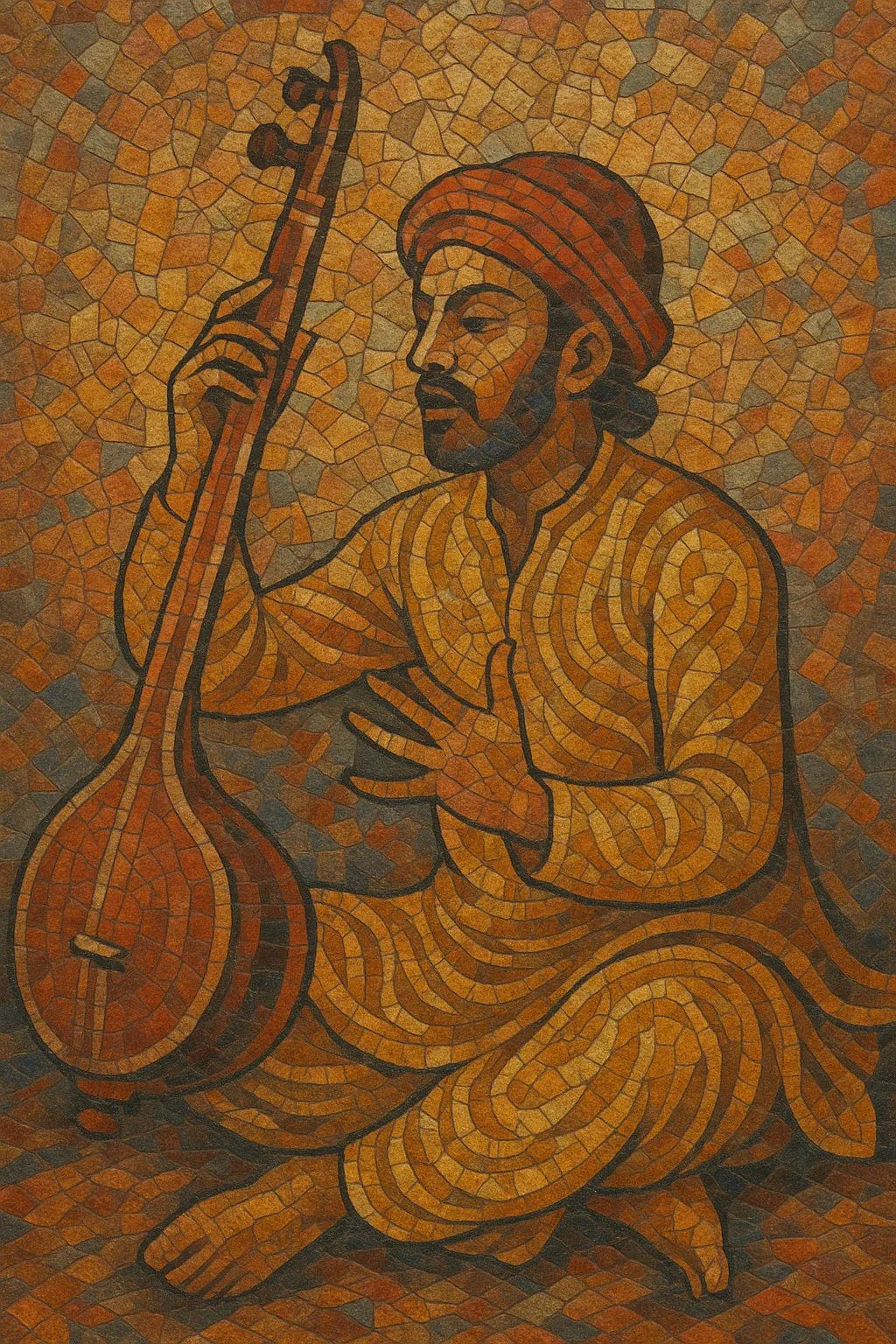Tappa is a fast, ornamental light-classical vocal form within the Hindustani tradition, famed for its rapid, bouncing melodic lines and dense clusters of micro-ornamentation. The word “tappa” itself evokes a springy, leaping motion, which is mirrored in the quick, knotty phrases that vault across registers.
Originating in late-18th-century North India, tappa adapts Punjabi camel-drivers’ folk tunes into a courtly idiom. Bandish (compositions) are typically short, set to brisk talas, and use Punjabi or Urdu texts about love and longing. Performers emphasize agility—deploying murki, khatka, zamzama, and lightning taans—making tappa one of the most technically demanding light-classical styles.
Tappa took shape in the late 1700s when Ghulam Nabi Shori (Shori Miyan), active in the Awadh court (Lucknow), reworked lively Punjabi camel-drivers’ songs into a refined art form. He retained the folk music’s springy, leaping motion but cast it within Hindustani raga–tala frameworks, producing compact, virtuosic bandish.
Following its emergence, tappa spread from Awadh to other North Indian centers such as Benares and Gwalior. While never as central as khayal or dhrupad, it became a prized specialty within several gharanas. Its appeal lay in luminous speed, crisp articulation, and heady romantic texts, which fit salon and mehfil settings.
In the 20th century, noted vocalists—including Bade Ghulam Ali Khan and Barkat Ali Khan—brought tappa to concert stages and radio. Later, artists such as Girija Devi and Malini Rajurkar cultivated the form alongside thumri and other semi-classical genres, ensuring its continued presence in the recital repertoire.
Today, tappa remains a connoisseur’s form: brief, highly charged, and technically exacting. Modern maestros and maestras present it as a climactic item in a recital’s drut section, often selecting lighter ragas and sparkling talas, while film and popular music occasionally borrow its spiraling taans and ornamental sparkle.
Select lighter or pliant ragas that suit quick, leaping motion—commonly Khamaj, Kafi, Bhairavi, or Pahadi. Favor brisk talas such as drut Teentaal (16), Rupak (7), Jhaptaal (10), or Ektal (12), keeping the theka crisp and buoyant.
Write a short sthayi–antara composition in Punjabi or Urdu, centered on romantic longing or playful love. Use concise, repeatable bol patterns that support rapid articulation and clear bol-banao without lengthy alaap sections.
Build the piece around dense, agile embellishments: murki, khatka, zamzama, meend used sparingly, and frequent taans in short, breath-controlled bursts. Shape phrases to bounce across registers, with quick turns and staccato accents that evoke the style’s ‘spring’ (tappa).
Begin with a very brief aochar (introductory outline), then move quickly into drut exposition. Accompany with tanpura drone, tabla (tight, articulate playing), and sarangi or harmonium for melodic support. Keep the item concise and high-energy, concluding with a well-placed tihai.
Maintain romantic, intimate expression while showcasing technical clarity. Prioritize evenness of fast passages, precise bol-lagav, and clean cadences that resolve the momentum without heaviness.


